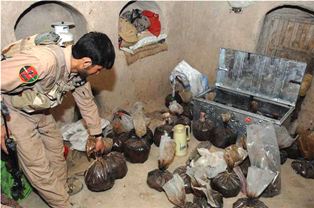
A 23-year-old recent college graduate has put together a captivating photo essay that highlights the growing epidemic of heroin addiction in Kabul, Afghanistan.
Souvid Datta was hired to photograph scenes of contemporary Afghan life following his graduation from the University College of London, but decided to use his free time to document the plight of heroin addicts in the city. He began visiting the addicts living under the bridge in Urdu, but it was only after his 12th visit that he had gained enough of their trust to feel comfortable taking pictures of them.
Up to 2,000 addicts might live under a bridge amidst human filth and a dried-up river. When winter rains fill the river, they will have no choice but to disperse.
“Narcotics are becoming a sad kind of equalizer,” he said. “You get middle class government workers, mothers, students, and the very poor people from the streets all going down under this bridge to use drugs.”
Datta documented some of the drug users and then later visited a treatment center in Kabul. Although the facility is among the best in Afghanistan and offered therapy and medication to patients, the lack of an aftercare plan or employment opportunities spelled disaster for most of them. “As soon as people leave [treatment], they relapse,” he said. “That’s no more obvious than in the center itself where you see people coming in for their fourth or fifth time.”
Drug addiction has continued to become an epidemic throughout Afghanistan over the last 10 years. From 2005 to 2009, the number of Afghan citizens using heroin or other opiates doubled to an estimated 1.6 million, or approximately 5.3% of the country’s population. The country also continues to produce around 90% of the world’s opium.
With less than 28,000 beds in treatment centers throughout the country, desperate families have turned to extreme measures. At the 300-year-old Mia Ali Baba shrine in Jalalabad, patients are chained with other inmates in a small cell for up to 40 days at a time and without any form of real medical treatment—this is In addition to living in squalid conditions without windows and no access to showers where talking is forbidden and men may only go outside, use a proper toilet, or pray, if the staff deems that their health has improved.